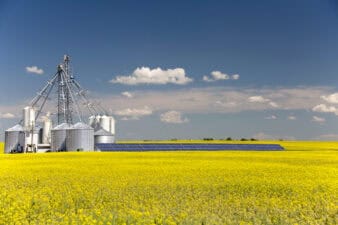For some time, I have been bullish on the outlook for beaten upstream oil producer Baytex Energy (TSX:BTE)(NYSE:BTE), particularly after it acquired Raging River Exploration, which boosted its light oil production. Despite the benefits of this deal, which was completed in August 2018, the market has heavily marked down Baytex’s stock; it’s declined by 8% since the start of 2019, despite oil gaining around 20%. This has sparked considerable speculation that Baytex is very attractively valued, making now the time to buy before the next oil rally.
Outlook is uncertain
Regardless of the attractive aspects of Baytex’s operations and assets, there are signs that it may not perform as well as those pundits believe. A key issue impacting Baytex is its heavily leveraged balance sheet, with long-term liabilities of almost $3 billion for a company with a $1.3 billion market cap. That massive pile of debt is a worrying four times trailing 12-month funds flow, indicating that it will be difficult to manage, especially if oil plunges once again.
Of greater concern is that there are several near-term maturities, which are creating additional pressure for Baytex in the current difficult operating environment. The $413 million drawn on its credit facilities is due for repayment in early April 2021, while $720 million in long-term notes mature in February 2021. This is a worrying development, because Baytex finished the second quarter 2019 with no cash on hand and receivables of $157 million.
The driller is also not free cash flow positive, meaning it is difficult to see how it can accrue the required funds to meet those debt maturities. There is every likelihood that oil will remain soft for the foreseeable future, further impacting Baytex’s ability to generate the required cash flow to meet its financial obligations.
That is being further negatively affected by the driller’s poor operating netback, which is a key indication of operational profitability and for the second quarter was $29.27 per barrel produced. Baytex’s netback is being impacted because of the discounts applied to Canadian crude benchmark prices, notably heavy oil which makes up 28% of its production. Weaker natural gas and the discount applied to the Canadian AECO benchmark which is trading at US$1.30 per MMBtu, or almost half the North American Henry Hub benchmark, is also having a marked impact on Baytex’s earnings.
For these reasons, it is difficult to see how Baytex can generate enough free cash flow to meet its substantial near-term financial obligations.
There is every likelihood that oil will remain weak, and that WTI will trade at less than US$70 per barrel over the next year. A combination of a softer economic outlook, fears of a recession, the U.S. China trade war, weaker manufacturing activity in China, and poor growth in Europe have all caused demand growth for oil to deteriorate significantly.
A report from Citigroup earlier this month stated that demand growth has almost halved and the impact of weaker consumption on prices is being magnified by rising supply. U.S. shale oil production continues to soar, which, along with large oil inventories, is weighing on oil prices, and, according to analysts, prevented crude from soaring to triple figures in the wake of the attacks that took around half of Saudi Arabia’s production offline.
Foolish takeaway
Baytex, because of its significant amount of debt and large looming maturities, is increasingly vulnerable to weaker oil prices and the poor outlook for the fossil fuel. This coupled with it being exposed to the discounts on Canadian oil benchmark prices, lack of free cash flow, and working capital deficiency makes Baytex an unappealing play on higher crude.
 Act Fast: 75 Only!
Act Fast: 75 Only!







